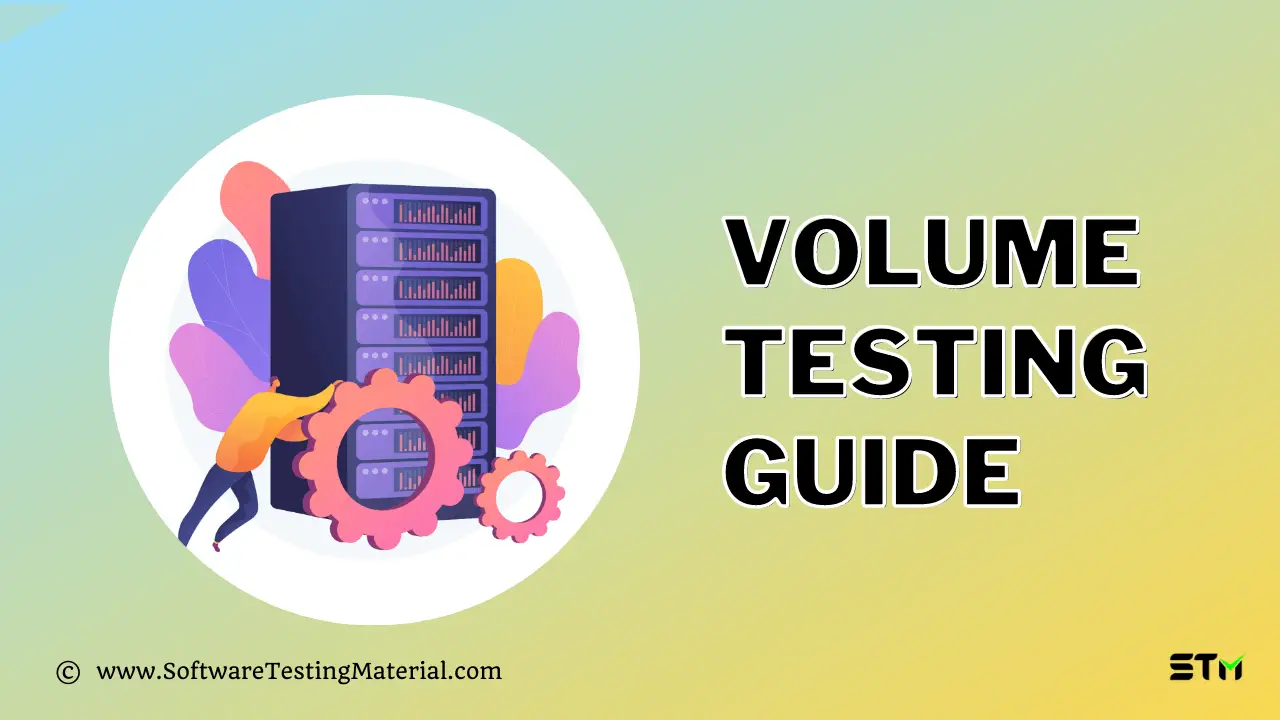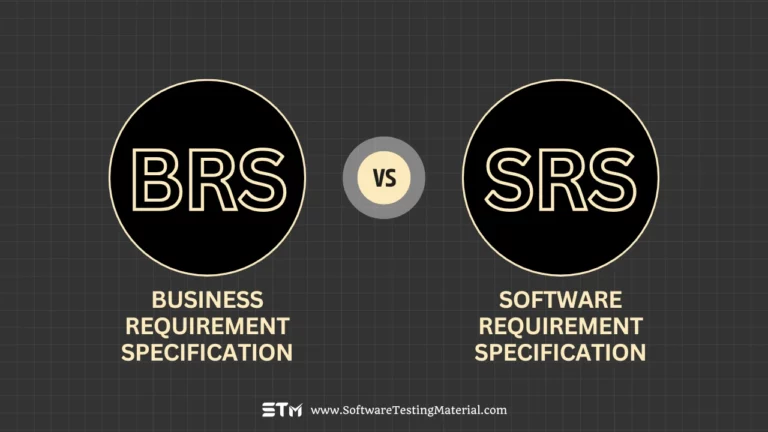Volume Testing Guide | What You Should Know

In this article in Software Testing Tutorial, we will learn What is Volume Testing, the Purpose of Volume Testing, How To Perform it, and the following.
What is Volume Testing with example?
Volume testing validates the performance of a software application when it is subjected to a large volume of data, it is a type of non-functional testing, it comes under performance testing.
Volume Testing is also known as Flood testing.
We can easily find out the areas where the system needs improvement by increasing the data load drastically and verify how efficient the software works in such conditions.
Volume testing involves using a variety of data and content for testing, there can be two types of data used for testing- one based on system databases and the other based on interface files.
Example: An eCommerce site might have only 1000 products in the week of its launch, but in a year the products list would be more than a million.
It is not wise to add more space and maintain it according to the increasing data on the site, such dynamic changes would only make the site crash.
Volume testing can reduce this risk by observing the performance, response time, functional characteristics of the application under a high volume of data.
Results from these tests can be presented to the development team, to make changes accordingly to ensure the quality of the product.
Difference between Load Testing and Volume Testing?
Even though volume testing and load testing have huge differences, there is some amount of confusion as they both come under performance testing and they both deal with large quantities of data.
| Volume Testing | Load Testing |
|---|---|
| The system should behave as expected when subjected to a large volume of data | The system’s performance is checked by increasing the load gradually till it gets to the maximum threshold |
| Verifies the response time of the system to an expected volume | Verifies the system’s performance when increasing the load |
| It is done by increasing the volume of data | It is done by increasing the number of users of the application |
| Measures the throughput of the system | Measures the performance of the system |
| Validates system’s capacity | Validates stability of the software |
| Focused on data storage and data loss | Focuses on security |
What is the purpose of Volume testing?
- To evaluate the capacity/volume of the system
- To detect and minimize issues related to database
- To recognize the failures that might arise with a huge volume of information.
- To identify issues related to data loss and storage in an early stage
- To find the exact data point where the system starts degrading its performance, we can understand the threshold of the database.
- To estimate the risk related to the capacity of the database when it’s pushed to a certain limit.
- To check the system response time.
- To recognize the system’s behavior.
- To prevent system failure
How to perform Volume testing?
Test data collection: Usually the business analyst collects a large amount of data that is likely to be used in the software application.
Planning: The testing team has to create a proper test plan, they make sure that testing stimulates the real-time environment, which includes the hardware too.
Execution: As it’s non-functional testing, it uses automation tools for performing the volume testing.
During execution, the testing team makes sure that they check all the scenarios. Here’s a list of things they will verify during volume testing.
- Verify the logs on various loads in the software application.
- Verify the response time of the application with low, high, and medium loads on the database.
- Verify the persistence of the current data in the database when uploading a huge volume of data in bulk.
- Verify if there is no data loss or overwriting on data in the database.
- Verify if there are any crashes or blockers that deny access to the application applied.
- Verify if there are any memory issues related to change in the volume of the database.
- Verify proper notification or warning message is received when data is there are any issues related to the increase in volume.
Report: Detailed report on the findings of the volume testing will be prepared and it will be shared with the stakeholders.
Challenges in Volume Testing
- If we are dealing with relational databases, it can be challenging to populate the database as RDBMS has a robust structure and has dozens of adjacent tables.
- Testers have to deal with a range of data sets like valid data, invalid data, wrong data, boundary data, absent values, etc.
- Automation can get complicated when dealing with a large set of data, to collect, validate, maintain and manage extensive sets of data can be challenging
- The system has to be monitored and the results must be recorded, this requires a lot of attention and patience to have accurate results
Best practices to perform Volume testing?
- Testers should have detailed knowledge of how the database is used.
- Testers should handle new builds with caution when performing volume testing.
- The team should make sure that manual testing is executed before getting into volume testing
- It is recommended to perform happy scenarios prior to volume testing.
- To attain the most out of volume testing, testers should stagger the number of users to increase the volume.
- Verifying the server and application logs by stopping all the server, this can provide a clear idea about its impact.
- The testing team should align their thinking time to resolve license restrictions.
- Once the baseline is established, the use case should be analyzed for any performance improvement.
- If a performance bottleneck happens, we can dive deep into the issue by repeating the volume test all over again.
Advantages of Volume testing?
- Volume testing helps us to improve customer satisfaction, there is a huge chance of the system getting into failure or reducing its speed due to high volume which might impact customer satisfaction. Volume testing helps us to prevent such scenarios.
- Volume testing can reduce the cost in maintenance of the system by identifying issues due to large volumes of data.
- Volume testing helps monitor exactly when the system response time reduces time when the system is exposed to high data volume.
- Volume testing can provide the guarantee to the client or the customer that the software application will work effectively in the real-world with a high volume of data.
- Volume testing makes sure that no data is lost and the uploaded data gets stored in the right tables when the application data is updated with large data which in turn has to update multiple tables in the database.
- Volume testing can provide us with future predictions regarding the data volume and help us determine whether the system can handle it or not, which helps in determining the scalability of the project.
- Volume testing provides us with a clear picture of the hardware required for the software to function smoothly, it includes memory, CPU storage, etc
- Volume testing helps us to save lots of money that might be spent on a contingency plan.
- Volume testing can help us find various bottleneck scenarios which wouldn’t have been uncovered during the development.
- Volume testing can help us evaluate the overall risk of failure when it comes to the performance of the system.
Disadvantages of Volume testing?
- Volume testing can be time-consuming and cost-consuming, as it is a non-functional testing type it needs automation tools and skilled resources.
- To implement volume testing, the testing team should be familiar with database concepts which includes training and learning new concepts this can increase the cost and time taken.
- Volume testing can be unnecessary for a small-scale project.
- Collecting the test data, preparing the test cases for the exact data volume might not be possible, it is not possible to predict the precise volume of data that may interact with the system in the future.
- Stimulating an exact type of real-world data for volume testing may not be possible.
- Volume testing can delay the release of the product, as it carries out the specific volume testing to cover all the test scenarios, the team has to create scripts and execute those scripts which could hamper the release time of the application.
- It is not possible to replicate the real-world environment, so efforts can be futile.
What are the automation tools used for volume testing?
Volume testing can be done both manually and through automation. There are several automation tools available in the market both open source and commercial. Some of the volume testing tools are as follows.
Conclusion
Volume testing can provide us with confidence in the capacity of the application, that is to be released in the real world. It can be very crucial when the product is required to scale up when using it in real-time. It can be executed both manually and through automation. But it does come with few challenges like it is difficult to generate memory fragmentation, key generation is dynamic in nature, it hard to maintain the relational integrity of the data and it is very hard to replicate the exact production environment. Nonetheless, it is equally important as any functional testing to understand the nature of the product.
Related posts:
- Performance Testing Tutorial
- Stress Testing Tutorial
- Load Testing Tutorial
- Endurance Testing Tutorial
- Performance Testing And Types of Performance Testing
- What is Verification And Validation In Software Testing
- Performance Testing Tools (Load Testing Tools)
- Best Web Application Testing Tools
- Web Application Testing Tutorial (How To Test A Website)






